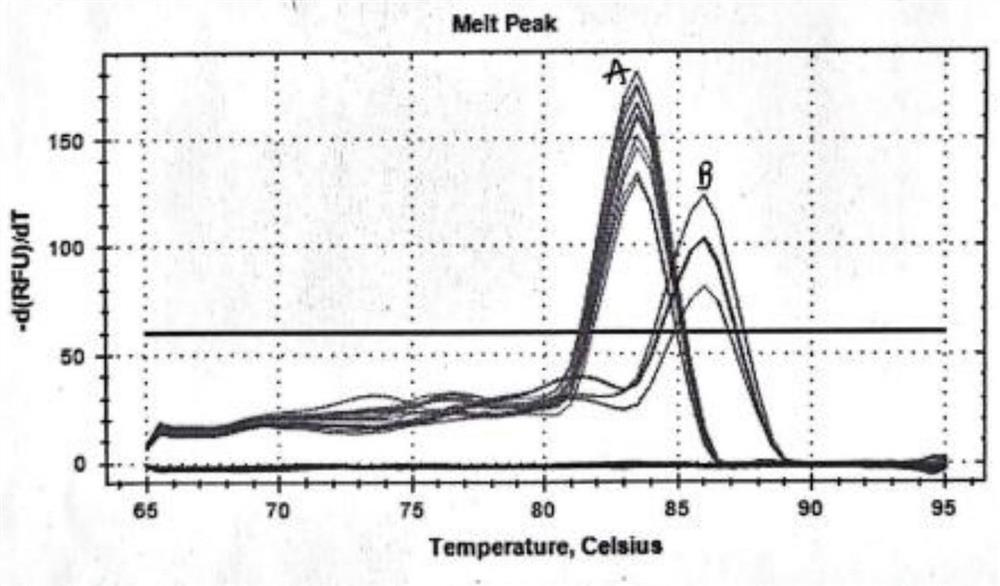Method for identifying sex of mammal embryo
An identification method, mammalian technology, applied in the determination/inspection of microorganisms, biochemical equipment and methods, etc., can solve the problems of unsatisfactory identification results, embryo damage, etc., achieve high identification efficiency and accuracy, low cost, shorten The effect of reaction time
- Summary
- Abstract
- Description
- Claims
- Application Information
AI Technical Summary
Problems solved by technology
Method used
Image
Examples
preparation example Construction
[0032] The FISH method mainly includes the preparation of fluorescein probes, the denaturation and hybridization of probes and target DNA, and observed 3 parts. The probe is first combined with reporting molecules. After hybridization, the fluorescent dye is connected by immunocytochemistry, which produces fluorescence. This method can be identified in cell division and intermediate hybridization. Although the method is specific, it is highly efficient, and the error rate is low, but It takes a long time, the reagent is strict, and the identification cost is high, so it is difficult to apply in production practice.
[0033] The PCR method is based on DNA characteristics, adding an appropriate amount of buffer, template DNA, 4 deoxyonucleotide (D NTP) solution, heat-resistant DNA polymerase, Mg2 + and 1 to synthetic primers in a microcencin. Using DNA in vitro 90-95 ° C high temperature solution spiral denaturing double-stranded cleaved chain, at low temperature (60 ° C), the prime...
Embodiment 1
[0051] The technical solution of this embodiment is:
[0052] (1) Get embryos: including living embryos or chemical embryos and frozen embryos, gender identification.
[0053] (2) Acquisition of genomic DNA of embryonic cells.
[0054] (3) Design and synthesis of primers.
[0055] Male special gene primer sequence: upstream 5'-TTGCCCCCTCCACATACAG-3 '; downstream 5'-agccaatgttaccctatcgtg-3'
[0056] Inner-term gene primer sequence: upstream 5'-ggtccacatgcctcccaag-3 ';
[0057] Downstream 5'-tccctttcctcaggggcctt-3 '
[0058] (4) QPCR reaction: In the PCR reaction system, an excess SYBR fluorescent dye is added;
[0059] Each PCR reaction system 10 μL: 2 × S6 Universal Sybr qpcr Mix 5 μL, upper and downstream primers were 0.25 μL, DNA template 1 μL, DD H 2 O 3.5 μL.
[0060] Q-PCR reaction amplification conditions: 95 ° C Prerequisitability 30s, 95 ° C denaturation 10S, 65 ° C annealing extension 20s, 40 cycles.
[0061] (5) Analysis of amplification curve and gender identification. ...
PUM
 Login to View More
Login to View More Abstract
Description
Claims
Application Information
 Login to View More
Login to View More - R&D
- Intellectual Property
- Life Sciences
- Materials
- Tech Scout
- Unparalleled Data Quality
- Higher Quality Content
- 60% Fewer Hallucinations
Browse by: Latest US Patents, China's latest patents, Technical Efficacy Thesaurus, Application Domain, Technology Topic, Popular Technical Reports.
© 2025 PatSnap. All rights reserved.Legal|Privacy policy|Modern Slavery Act Transparency Statement|Sitemap|About US| Contact US: help@patsnap.com



